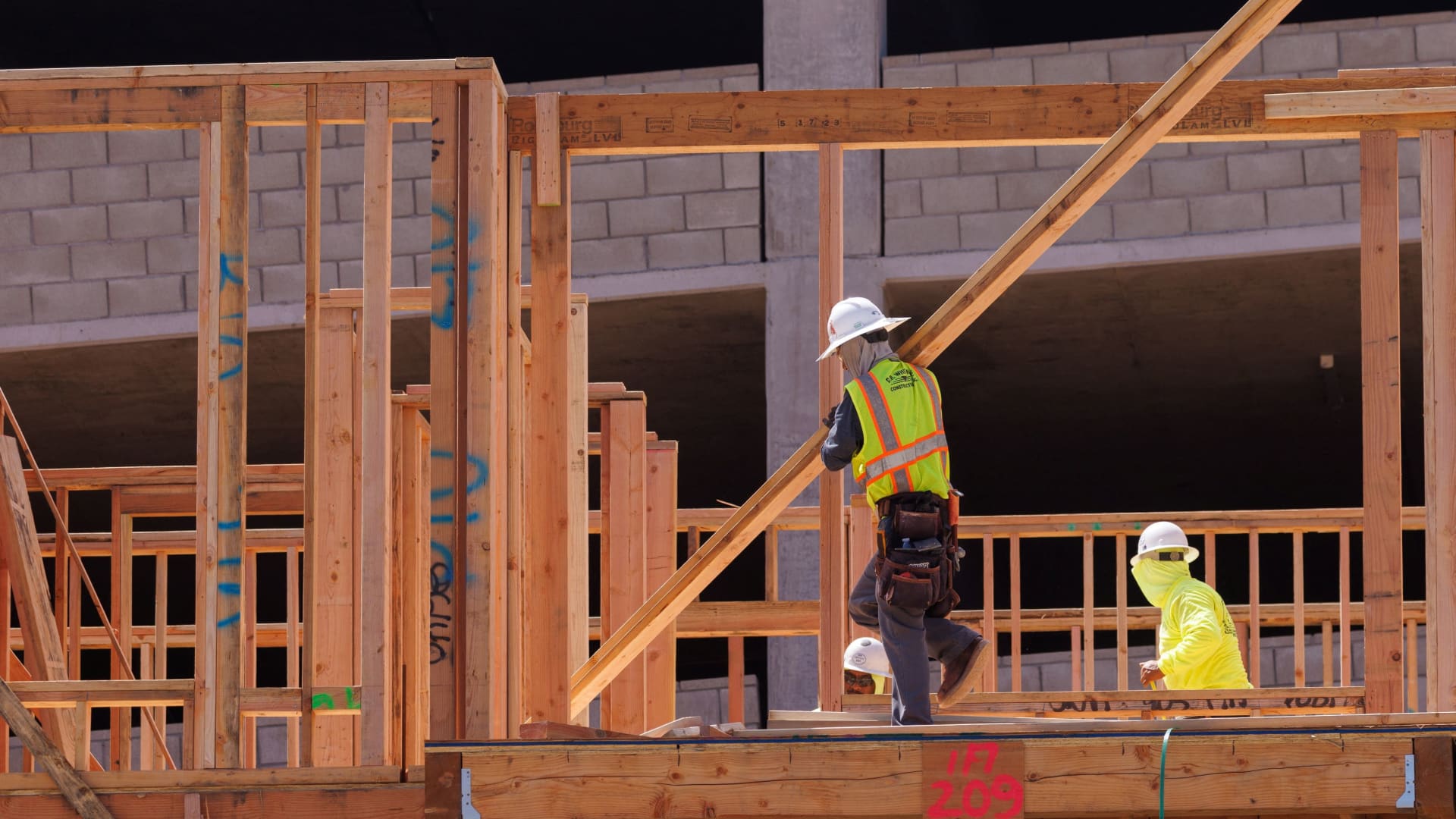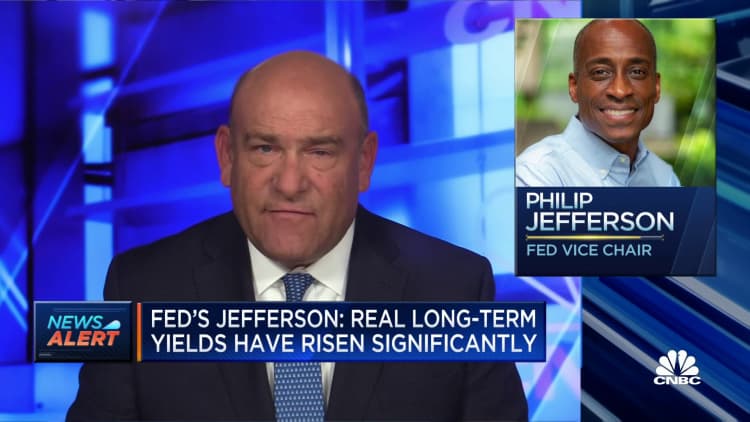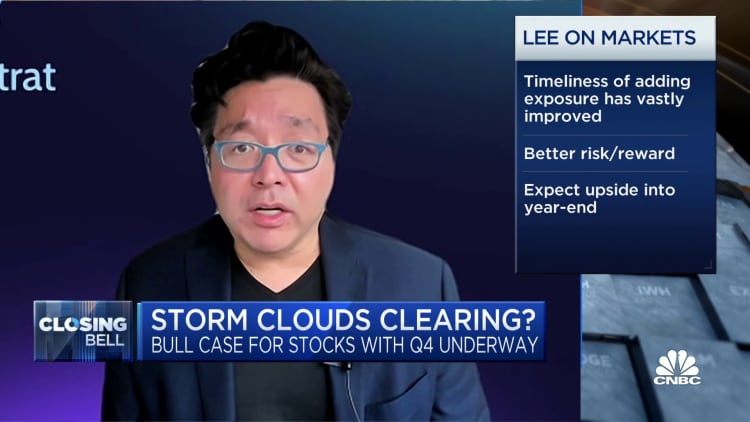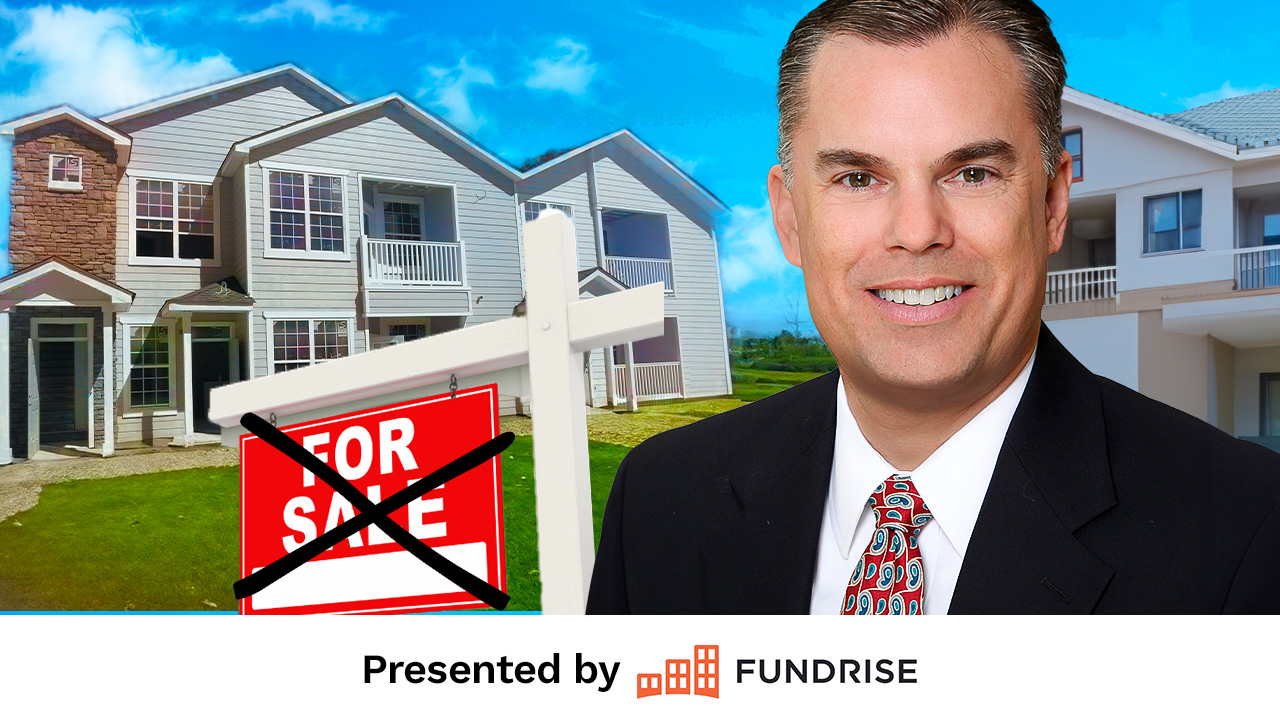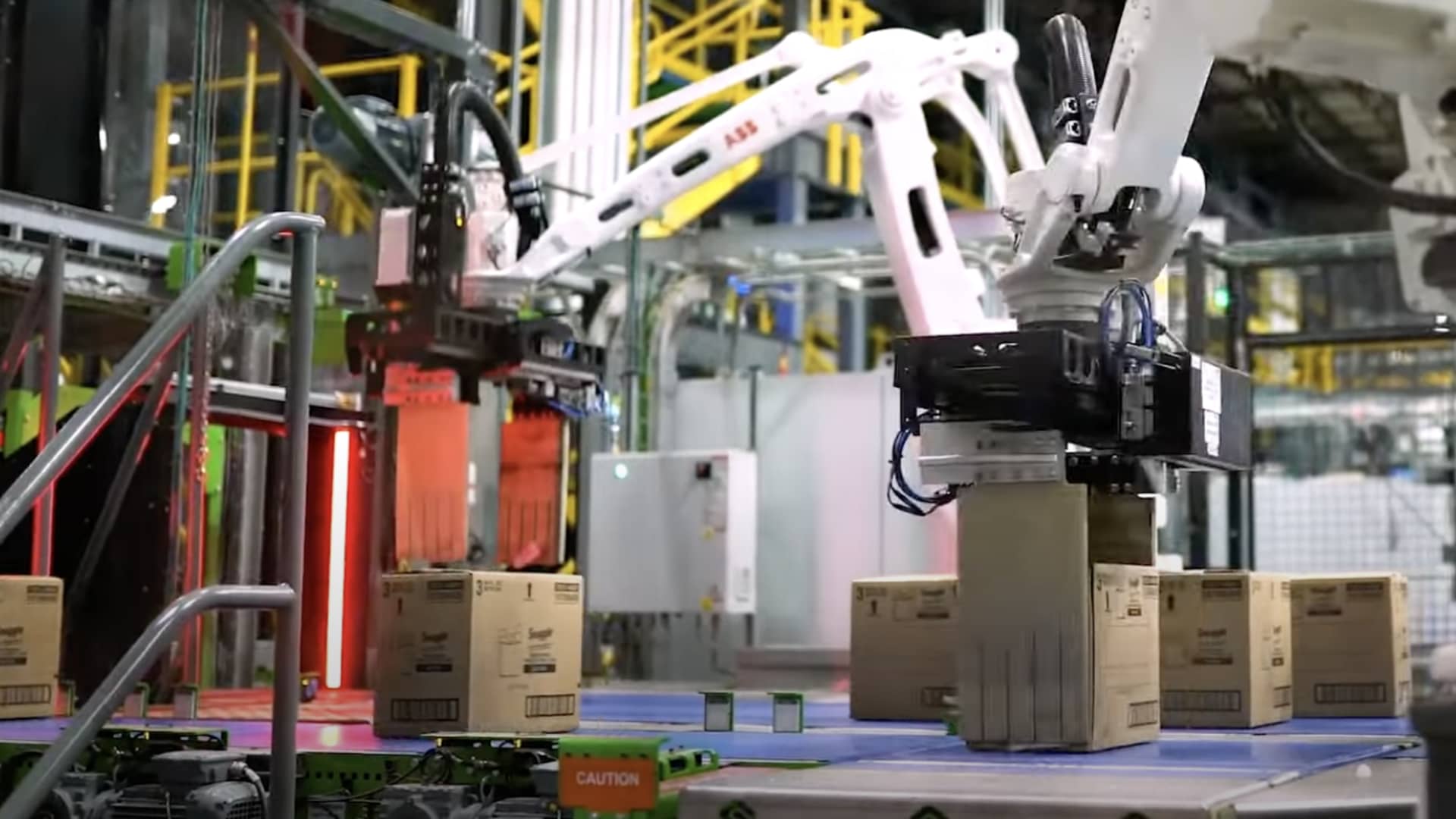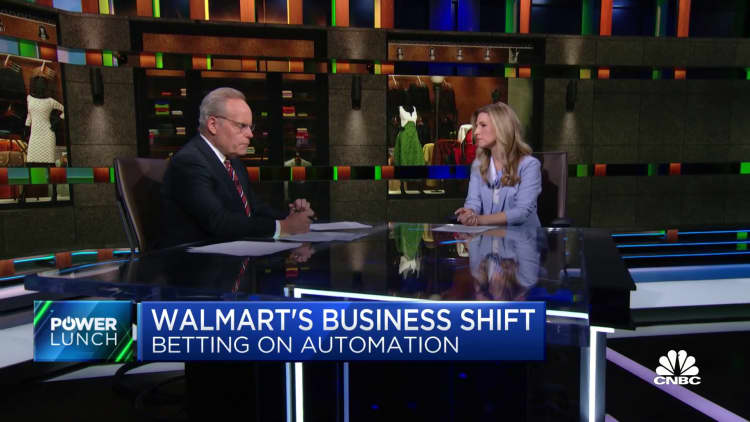Thanks to serving in the military, Clint had his college paid for by Uncle Sam. When the opportunity to be deployed came up, Clint took it, knowing he’d make more while spending less. He was able to save up a nice chunk of change and used it to buy a rushed first rental property. But then, Clint realized he could pay almost NOTHING for a home he would live in, so he looked around for just that, and the eighty-dollar house hack came to be!
Ashley:
This is Real Estate Rookie episode 329.
Tony:
What was your actual out-of-pocket expense to purchase this duplex?
Clint:
I think I paid 80 bucks for a pest inspection.
Tony:
What was the purchase price on the duplex?
Clint:
It was 256.
Tony:
You’re controlling a $256,000 asset with $80.
Clint:
Yeah, basically. So…
Tony:
That is insane.
Ashley:
My name is Ashley Kehr and I’m here with my co-host, Tony J Robinson.
Tony:
Welcome to the Real Estate Rookie Podcast, where every week, twice a week, we bring you the inspiration, motivation, and stories you need to hear to kickstart your investing journey. Every once in a while, Ash and I bring on a guest where we both get to learn something new and today was one of those episodes, where we learned a lot about a special type of loan that allows you to have $0 down, no PMI, and potentially no closing costs if you can negotiate the right way.
Ashley:
But you also had to serve in the military. Thank you to anyone who has served. We really appreciate your service. This episode is for you, or if you know anybody that has military experience or maybe your spouse or significant other even.
But not only do we talk about the benefits of this loan product that you can get, if you are somebody wanting to get into house hacking, Clint, our guest today, also talks about how he was able to house hack his property and how he actually set that up to be beneficial. He also became a 1/6 owner in a really big real estate deal, if you compare his first purchase, his second purchase to his third purchase, the big price difference in that and how he was able to do that strategy. It’s all about partnerships and being able to grow and scale. So, do not forget to visit biggerpockets.com/partnerships.
Tony:
You’ll also learn in Clint’s conversation with us how to build your credit. So, if you’re someone who is either just starting out or maybe you’ve been a Dave Ramsey evangelist for a long time, you don’t have a credit score, you’re like, “How do I get started?” Clint is going to give you the answer and how he did it in his own life. So, really excited for you guys to hear what Clint has to say.
Ashley:
Well, Clint, thank you so much for coming on the Real Estate Rookie show today. Tell us a little bit about life before real estate.
Clint:
Before real estate, I was probably junior or sophomore year in college and basically, I knew I wanted to get into real estate. I just didn’t really know how at the moment. What ended up happening, it was perfect timing, I was in college going to school. I’m in the Air National Guard. I was getting my school paid for, and so I didn’t have many expenses. I was also living at home.
Then this opportunity popped up, where I could go on a deployment. So, I volunteered to go on this deployment and went on a deployment for, I think it was nine months. I was in Jordan for eight months, and then I was in Kuwait for two months. That allowed me to save some money and everything and then I was able to start my process and actually looking at real estate and really taking a hold of it.
Ashley:
With that money you had saved, why real estate? Of all things that you could spend your money on, what made you decide, “I don’t want to invest in the stock market,” or, “I don’t want to buy a new car”? What made you decide on real estate?
Clint:
Before the deployment, back up a little more, I guess, I started a Roth IRA. I put money into it and everything and it was rising up fairly well and everything. Whenever I got back home, COVID was actually starting and everything. Once that started, a lot of the money that was in it just plummeted. I understand it’ll come back up and stuff like that, but I wanted something that was a little more secure. Real estate, in my opinion, is an investment that I know what it is. I know how many bedrooms are in a property, I know how to fix it up and stuff. With an IRA or anything like that, I don’t have any control I feel over what I’m investing in. So, I just wanted the control aspect, I guess.
Ashley:
What was your goal as to how much money to save?
Clint:
Well, whenever I was on the deployment, basically I was just saving as much as I could. I was an E4. So, I wasn’t making a whole lot of money in general. I think it was 38,000, tax-free. That’s what I made over those nine months. But along with that, I think I spent maybe three grand over those nine months. So, I was able to save up quite a bit of money whenever I came home, and then that’s whenever I was really starting to look into buying a property.
Ashley:
Well, Clint, thank you so much for your service. We really appreciate it. Tell us about once you come home and is that when you started looking for properties, or was there a period of time before you decided what you wanted to do?
Clint:
I really didn’t know what I wanted to invest in. My whole mindset at the time was, I’m going to go home, buy a property, then I’ll be out of my parents’ house and everything. That’s what my motivation was at the time. I wasn’t really thinking about it as an investment.
On the deployment, we had lots of downtime and stuff. So, whenever I wasn’t doing anything, I would just be on Zillow or realtor.com looking at properties. I would find all kinds of properties and save them, even though I was four or five months away from actually being able to be back home and those properties would be sold and everything by then. So, it was just constant hold on the market that I was looking at.
Once I got home, I tried to actually make an offer on a property. But first, I wanted to get pre-qualified and everything, and that’s whenever I ran into a lot of issues because I didn’t have any credit. I just had no debt. I paid for my first vehicle in cash. So, I didn’t have any debt or anything like that or any credit cards. That’s my first experience of trying to figure out what it takes to buy a property.
Ashley:
What actually shows up on your credit report when you have no credit? Is it just zero, or does it show super low? What does, “I have no credit” actually look like, I guess?
Clint:
It basically just says NA. There’s nothing there.
Ashley:
Okay.
Clint:
The banker that I was using, he goes, “Either it can be a good sign or it’s a terrible sign.” Fast-forward a little bit, I guess, whenever I started the job I’m working now, I learned about credit. From there, I was actually able to get a credit card and start working on that.
Tony:
Clint, I want to touch on a little bit in a second here how you actually built that credit up to put yourself in a position to start buying real estate, but I just want to take a step back here first. There’s a lot of Dave Ramsey evangelists that love everything that Dave Ramsey has to say. Ash and I talk about this a lot, that there’s a lot of validity in what he says about managing your personal finances, living below your means, and not being financially irresponsible. However, unless you make millions of dollars a year, tens of millions, like Dave Ramsey does, chances are you’re probably going to need some debt at some point in your life, and especially if you want to become a real estate investor.
Just for our rookies that are listening, if you’re currently on your Dave Ramsey kick, I think continue to get rid of a lot of that consumer debt, but also try and be smart about how to start building your credit profile to put yourself in a position to buy real estate. Otherwise, you could be like Clint, where maybe you’ve saved up all this money, but then you go to a bank and they’re like, “You’re a ghost. You haven’t been anywhere. We don’t even know if you’re a real person or not.” Clint, I guess, the question that I have for you is, how did you go about actually building your credit from literally an NA on your credit report to getting to a point where you are in some way bankable?
Clint:
I was on the Dave Ramsey kick for a long time too. In college, I was listening to his podcasts and everything. I would listen to him for hours and I thought he was amazing. He’s really good at debt consolidation for credit cards and stuff, but in terms of buy a house in cash, that’s just not reasonable.
Some of the things that I did in terms of building credit was I got just a basic Discovery credit card. I think my credit limit was $500. So, super small. I had that for about six months before I actually started to receive a credit score. I don’t honestly know the other factors, but it took six months for me to get my actual credit score. From there, I just kept spending about 20 to 30% of that $500 or so, and then you pay it off at the end of the month every time and just don’t let it stack up or anything like that.
Ashley:
Tony, I just want to touch on quick too, and Clint, since you’re sharing this journey about as to… Maybe somebody’s never even looked at what their credit is and one way to do that is to sign up for a free account at someplace like creditkarma.com or you can actually pull your credit once a year I think it is, and you can pull it yourself. You go to, I think it’s… I don’t know, just Google, “Pull my credit through a government agency.” Make sure it’s .gov website you’re going to. You can pull your credit yourself and it’ll show you everything on there. You’re able to do that once a year and it will not have any impact on your credit.
I use Credit Karma and I’ll look at it. It’s not always super accurate, because it’s not actually pulling your hard data, but it’ll break down for you the things that your credit score actually takes into consideration. The first is payment history. It’s showing that you consistently made payments. The next is credit card utilization, so that if your credit limit on your credit cards is say, maybe between three credit cards, you have $10,000 available. The rule of thumb is you want to stay under 30% utilization of whatever that is.
Then derogatory marks. So, if you have anything in collections, you have late payments, bankruptcies. Credit age. If you’ve opened a credit card 10 years ago and then you decide to close that, you no longer have that 10 years of credit history and now, all of a sudden, you have one year of credit history. So, it takes that into an account. Also, the total accounts. How many credit cards do you have open? How many student loans do you have open? Also, hard inquiries. So, this is usually when a financial institution will pull your credit report. The more hard inquiries you have, then the more it can impact your credit score. There’s also soft inquiries, where it doesn’t make an impact at all on your credit score.
Tony:
Ash, that was a great breakdown and I really encourage everyone to be using Credit Karma. A side note, I wrecked my credit score last year because I had an electric bill or a gas bill from one of my properties in Shreveport, the very last one that I sold off. They sent the final bill to the property and I never set up any mail forwarding for that property. Anyway, that property ends up going to collections over a $200 gas bill. So, I had to fight with them to get that fixed.
Clint, I’m curious, if you had to give your credit building 101 for our rookie audience, what would that look like? Would you encourage them to go out and get a $500 credit card and pay it off every single month? What would your advice be to someone who’s in a similar situation?
Clint:
Exactly what I would do. It really hurt me on my first property, not having any credit. What I would do is I would definitely tell someone, “Go out, get an easy credit card that you can pay off,” and just like Ashley was saying, “utilize only 30% of that actual credit limit and pay that off each month.” Also, you can ask for increase in your credit limit basically. It is like those auto increases that happen, you can actually request an increase. That was something that I wanted to do because I wanted to put most of my monthly expenses on my credit card to where I could get at least some points back, rather than just using my debit card and stuff. So, I always was calling Discover every couple minutes… Or couple of months and just having them-
Tony:
Every couple minutes?
Clint:
Every couple minutes, yeah. Can I get an extra grand now?
Tony:
But Clint, you bring up something that I feel like doesn’t get talked about enough, but is putting those regular expenses onto your credit card. We’ve run a lot of our business expenses through our credit cards as well. I’m on vacation right now in Huntington Beach, California, and this entire trip is pretty much covered by our points. We vacationed a ton by using the points that our credit cards give us. I think Ash and I both use the Chase Sapphire card. Love that card. The Amex Gold card I heard was good for travel. So, I just got that one as well. Ash, I think you have the Southwest card too? You’ve got a couple travel credit cards.
Ashley:
I’ve got eight of them. I love travel hacking. I just opened another one recently because every LLC, you can open a couple of them. When they do the $100,000 point sign up bonus, you have to spend $3,000 in the first three months. I can spend that in one week for one of the properties.
Tony:
Right.
Ashley:
But yeah, the travel hacking. Thepointsguy.com is a great resource. Aunt.Kara on Instagram, she talks about it a lot. There’s definitely a lot of travel websites out there that talk about using credit card points. But just as Dave Ramsey would advise not to use them, we also say if you’ve had a problem with credit cards and being able to pay them off, maybe this is not the right strategy for you right now to try the travel hacking with points.
Tony:
But that’s why I think if you’re setting it up, where it’s like these are things that I’m going to be spending money on anyway and I’m just putting on the credit card and then turn around and paying them off. We probably go in every couple of days to pay down most of our credit card balances. So, we try not to let anything roll.
Clint, you do all this work to build up your credit. How long does it take before you become, I guess, credit-worthy to actually get a loan on a property?
Clint:
Well, the second I showed a credit score after having it for six months, it wasn’t a good credit score. It was in the 640 range, somewhere like that. I was actually closing on a house, I want to say it was three months after I showed a credit score. With the VA loan, the lender I used, they can dictate what their credit limits are and stuff like that, but their requirement was a 620 credit score at the time. So, I basically snuck in there with the 620 or the 640. But yeah, I also just got more credit cards as well. I have the Chase Sapphire and then I also have the Chase Freedom, I believe, for daily spending. But I know that you could pair those up together to where you have both of those points. So, that’s what my girlfriend and I are actually doing in December. We’re going to go to Europe and we have about a thousand dollars in points that we can go spend. So, that’s something-
Ashley:
Awesome. That’s super cool.
Clint:
Just get more streams of credit. Definitely, it’s a lot easier to build your credit whenever you have multiple credit cards.
Tony:
We’re going to have someone leave a review in the podcast saying, “I took the advice from Clint telling you and Ashley, and I’m a hundred thousand dollars in credit card debt. This is the worst podcast ever.”
Ashley:
“But I also am going to Europe for three weeks all paid for.”
Tony:
[inaudible 00:16:48]. Clint, I want to go back to that first deal and help me just understand the timeline here. You’re saying that you got that first deal about 90 days after your credit report finally showed something. Am I understanding that correctly?
Clint:
Well, that would be the property I’m currently in. My first property was whenever I didn’t have any credit. I had just come home from the deployment and basically my brother and I were going to move up to Columbia at some point. We were like, “Okay, well, let’s find a place.” We were looking around, we couldn’t really find anything. So, we decided to rent in Columbia. But then after we signed our lease and everything, a property popped up in Columbia. It was a two bed, one bath, just condo, and it was priced at 76,000. So, it was pretty cheap. And-
Tony:
Wait, sorry. Clint, when you say Columbia, are you talking about Colombia, the country in South America, or is this a state?
Clint:
Sorry, no, Columbia, Missouri.
Tony:
Oh, gotcha. All right.
Clint:
Yeah, no.
Tony:
Two very different places.
Clint:
Yeah, very plain here.
Ashley:
You mean you don’t know Missouri, Tony?
Tony:
Never heard of Columbia, Missouri. All right, gotcha.
Clint:
Basically, we moved up to Columbia, Missouri and we signed a lease. Then we found this property. It was very cheap. So, my brother and I were like, “Okay, well, let’s try to buy it and make it an investment property before we even have our own property.” We viewed the property and then we actually said an offer that they accepted, but we weren’t even pre-approved. This was our first time going through this whole thing. So, they waited on us to get a pre-approval letter for five days or so, which now you wouldn’t be able to do that.
Now, the market’s so crazy. But at the time, we ran to our bank and then they were like, “Since you guys have no credit, it’ll be 20% down.” We’re like, “20% down on a $76,000 loan?” It was annoying, but we did it and it was a three-year arm at four and a half percent. So, we were doing that and we got a tenant in, I think it was a week after we closed. Got a tenant in and then they were paying that mortgage and I think we were only cash flowing $25 each. It wasn’t much because it was that three-year arm.
Ashley:
Explain what an arm is in the three-year arm.
Clint:
Basically, with the arm, you have a set rate for, it was a four and a half percent interest rate for those first three years and then after that, it balloons up. You can pay the rest off or you can just refinance, so to speak, into whatever the current rates are for that.
Tony:
I just want to comment really quickly because the arm, the adjustable rate mortgage, is something that it’s a hate it or love it type thing. You see some investors who really hate the idea of an arm because some of, I guess, the potential downside of an adjustable rate mortgage is say that someone bought a property in 2021. Maybe, they locked in a 3% arm and they were cash flowing, whatever, several hundred bucks a month at that 3%. Now, they had to refinance in 2023 or 2024, when interest rates have gone up to seven or 8%. I just closed ReFi at almost 9%. It was 8.7. That arm now could potentially make that deal negative cashflow and unprofitable. So, there are some risks and some benefits with the arm. I guess, Clint, for you guys, what made you comfortable? I know this was your first deal and maybe you weren’t even thinking this far, but I guess, what made you guys comfortable with the idea of using the arm for that first deal?
Clint:
Like I was saying, whenever I went on the deployment, I saved $35,000. So, 20% divided by my brother and me, it really wasn’t a whole lot for me to invest. It was I think seven grand for me or seven and a half. So, I was fine with just making that investment for the three years. Our idea was before the three years was up, we would just sell it for whatever it appraised at and then take our money and invest into something that we actually see long-term.
Ashley:
With the arm mortgage, I’ve done a bunch of commercial mortgages. Well, even though they’re not really called adjustable rate mortgages, they end up going to adjust after a certain amount of time of being fixed rate. Typically, it’s a five-year fixed or 10-year fixed and then they adjust, or the loan actually ends and you have to go and refinance on the loan. But it can go to variable. I recently did my first residential mortgage doing the arm and I actually was just trying to search it real quick because I can’t even remember if it was a five-year arm or a seven-year arm is what we did, but I didn’t find it fast enough.
What we did with that one is we were able to get a way lower interest rate than what we could have if we did a 30-year fixed. So, we’re taking a risk, we’re having a lower payment now, but also I really thought the loan officer was super great and informational at explaining exactly what would happen, your worst-case scenario, your best-case scenario, giving it all to me in writing as to the minimum your interest rate will ever go is 5%. It’s at 5.25 right now for the next five or seven years, whatever it is, which is a great rate right now. You can’t find that anywhere. This was just last June, I think it was that it closed. So, not that long ago.
But then it says your interest rate can go up to 12%. That is the max it can do. When it is that five one arm, the first year, the max. After the five years, that first initial year, it’ll only go up to 6% and it’s that one year difference. Then after that, it will go up to whatever current rates are. With that, we looked at the property and said, “Okay, in that timeframe, we are able to pay off a chunk of that loan and we could go and refinance the lower balance.” Even if it is a higher interest rate at whatever the market rates are, our payment will still be affordable because we can pay off that certain amount of it. That’s the worst-case scenario for us.
Best-case scenario, over those next five or seven years, interest rates have come down and we can go and refinance at any time to get that locked in 30-year rates. Downside, we have to pay closing costs twice, but it would be worth it if you’re saving money long-term on the interest rate. So, this was my first time using that, but I looked at it more and it’s like it’s very comparable to what you’re dealing with on the commercial side of lending. You only get those rates for five or 10 years and sometimes those are even only amortized over 15 or 20 years and not even 30 years. So, you’re just taking the risk I have with all the commercial properties that are in LLCs.
Tony:
It sounds like, Ash, there’s a time and place where the arm does make sense. I love your idea of, “Hey, what’s the worst-case scenario here and could we live with that worst-case scenario?”
Clint, I think it sounds like you used the best option you had available at the time. I think for our rookies, that’s an important lesson as well is that sometimes, you just got to… You’re not looking for a home run on that first deal. You’re just trying to get on base and it sounds like that’s what you did. What was the outcome of that first deal and how did it, I guess, push you into that second deal?
Clint:
Basically, what happened was we were renting it out. Nine months goes by and our lease starts to end that we were actually renting from. My brother, he wanted to move to St. Louis. He needed money basically in order to move to St. Louis and the money that was in this property was tying him up. At first, I thought about refinancing with him to where it was just solely my ownership, but then I was like, “I don’t really know if I want to hold onto this property or not.” Looking back on it, I probably should have, but at the time I was like, “No. Fine, we’ll just…” We saw that prices for those condos had been rising, and so we were like, “Okay, well, let’s just list it on the market and see what happens.”
We listed it on the market for, I think it was just under 90,000, maybe 89 and this was only nine months after we had closed on the property. We got a cash offer for 88 or 89, something like that, nine months later. I think after realtor fees though and everything, I’m pretty sure my brother and I only profited about a thousand dollars each, something like that. It was very minimal, but it was a good introduction into owning real estate and everything like that. The property itself was very easy to maintain. I think actually the first week that we owned it, the tenant was coming in towards the end of the week, and the second she got in, her ceiling fan in the master bedroom was just hanging by the wiring. I was like, “This couldn’t have happened,” but-
Ashley:
Especially over the bed. That makes it even worse I feel like, like, “Oh my God, what if that actually fell?”
Clint:
Well, I was like, “What are the odds of that with…”
Ashley:
Yeah, and this was the first week you said of owning it?
Clint:
Yeah, very first week.
Tony:
Introduction to being a landlord, right?
Clint:
Yeah. I mean, that was a very easy fix, but at the time I had no idea about how to do anything. So, I watched a YouTube video, had my friend help me, and we fixed it.
Tony:
Isn’t it crazy how when you first start investing, everything seems like a crisis? You’re like, “Oh my God, the ceiling fan is hanging. What am I going to do?” Now, it’s just like you send a text and you don’t lose sleep over it.
Clint:
Absolutely.
Tony:
Just going back to the deal, Clint, you said that you and your brother only profited a thousand bucks, but I mean, it’s you guys bought the property, got cashflow during that time, and then were still able to get an additional chunk of cash when you exited. That’s a solid first deal, and it allowed your brother, I’m assuming he made his move to St. Louis after you guys did that? Just to clarify, St. Louis, for everyone that’s wondering, is also a city in Missouri. This is not St. Louis, a country in South America. It allowed you guys to move on to the next phases of your real estate career.
I guess, tee us up now, Clint, for that second property. You didn’t have any credit on that first one, 20% down, you have the arm. Now that you’ve been building your credit while this first deal is running, what does it look like for that second go round with the second property from a financing perspective?
Clint:
The second property, I was looking for a property for me and my girlfriend to live in. At the time, I was just looking for a single family property. I was like, “I just got to get out of renting. If I’m paying my own mortgage, that’s fine. At least, money’s going to be coming back to me whenever I do sell.” So, I was completely fine with just buying a single family property. We looked at a couple and we really liked them, but at that time, with COVID and everything, say the property’s 250, you make an offer, and at the time, the final purchase price would be 290. So, you’re-
Tony:
Half a million, right? Something crazy.
Clint:
Yeah. We were constantly getting outbid and we were honestly getting really defeated about it. I randomly saw a duplex in Ashland, Missouri, which is just slightly lower than Columbia, Missouri. Basically, it was a nice duplex and it was for sale, and I checked it out. The only thing is that it was a bad road in order to get to Columbia where I work. So, I was like, “I don’t really want to do this,” but the real estate agent said, “Oh, well, there’s three on the other side of the highway to where you don’t have to worry about the road. There’s three lined up and that one has a new water heater and new roof.” So, I was like, “Okay, well, let’s go check it out.” I didn’t even go inside. I walked around the sidewalk and then I was like, “Okay, well, let’s make an offer on it and see where it goes,” type of thing.
Ashley:
Clint, what gave you the confidence to just look at the outside of the property and decide, “I know what I can offer on this”?
Clint:
I would say, for the most part, it might’ve been I was looking at properties, single family homes, and I wasn’t going to charge my girlfriend a whole lot for rent because she has student loans and stuff like that. So, I was like-
Tony:
[inaudible 00:29:52].
Ashley:
Don’t try to justify it, Clint. You’re playing favorites.
Tony:
Word. No, I think what’s funnier is that his reason for not charging her was because of the student loans and not because it’s his girlfriend.
Clint:
She’s trying to get ahead and stuff like that. So…
Tony:
You’re a ruthless businessman, Clint. I love it.
Ashley:
My cousin, she started dating this guy that had a duplex, and I was like, “Oh, that’s so awesome you’re talking real estate investing.” Then a year later, she ended up moving in with him and I was like, “So, you’re house hacking now?” He’s like, “Yeah, she has to pay all the utilities because I know she’s going to be using more water and electric than me.” He’s like, “I’m not going to make her pay rent, but I am house hacking because she’s paying me all the utilities.” I was like, “Good job.”
Clint:
But yeah, basically, that was the whole thing. I wasn’t going to make her pay half the mortgage or anything like that. The second I looked at this duplex, I go, “Well, half the mortgage will be paid right there.” So, it was a very easy decision for me to just buy a duplex and then have the other side pay for most of my mortgage, and then I could pay for whatever’s left type of thing.
Tony:
Once you find this property, you fall in love with it, you submit the offer, how are you financing this? Is this another 20% down arm? Is there another option that you’ve discovered? Walk us through that piece.
Clint:
Yeah, I used a VA loan. The job that I work at right now, Veterans United Home Loans, basically they’re number one VA purchasing lender in the country. So, very big on the VA loan.
Tony:
Clint, if you don’t mind, just so I can clarify for our rookies, what is a VA loan? Does that stand for virtual assistant? What is VA?
Clint:
Just it’s for service members and their families. If say, a service member passes away, there’s instances where you could have that spouse survivorship carry on to that VA loan. So, it’s really just a chance to give service members and their families a chance to own a property and everything like that, more specifically, single family homes. It’s meant to be a primary home for service members.
Tony:
Clint, what are the, I guess, advantages? Why would a service member opt to use a VA loan versus a traditional FHA or all the other loan options that are out there?
Clint:
What interests me was with the VA loan, I didn’t have to put any money down, which meant that I could use that money for renovations on the property and stuff like that, which would inevitably increase rent and stuff like that as well. So, it was really nice not having to really put a down payment down. There’s also no PMI insurance throughout the duration of the loan.
Ashley:
Can you explain what that is too, Clint? What PM and I is? PMI?
Clint:
I’m drawing a blank right now as to the actual term.
Ashley:
Property mortgage insurance, I think, right?
Clint:
Yeah, property mortgage insurance.
Tony:
Property or private?
Ashley:
Private.
Tony:
Private mortgage insurance. None of us know. Who knows?
Ashley:
Just explain what it is.
Clint:
It’s basically insurance that the bank has on you to pay until you hit that 20% mark of equity. With the first time home buyer loan, I believe it’s the whole duration of that loan. So, you might be able to refinance after a while into a different loan, but with the VA loan, the big incentive there is there’s no PMI regardless of your down payment.
Ashley:
If you guys listen to the Real Estate podcast, you know they always do their quick tip though. Here’s a tip for anyone that put less than 20% down, if you are still paying that PMI on your mortgage, talk to your loan officer about getting that removed because sometimes the bank will just do a desk appraisal, where they will just say, “Yep, you’re right. You have enough equity in your property where you have more than 20% equity.” Even if you’ve only owned it a year and you haven’t paid down 20% of what you purchased it for, if you have enough appreciation in your area, you can go ahead and get that PMI removed, which oftentimes can be actually quite a few-
Tony:
Big difference.
Ashley:
A couple of hundred bucks at least.
Tony:
Just a quick personal story. We did that on our primary residence when we bought our first home back in 2018. It wasn’t a first time home buyer, but it was some loan assistance product from the builder. We had PMI when we first got the property, and I think it was less than a year. We were able to show that, even though we hadn’t paid down 20%, the appraised value of the home had increased, so that our spread, we had gained that equity through the increased value of the home. We were able to reduce or get rid of the PMI, and then we refinanced to bring down our interest rate. So, we’re actually paying less now for our home than we were when we first bought it, even though the value of the home has increased. It’s crazy. Highly encourage everyone to do that.
Ashley:
Yeah. Do you remember what that difference in payment was, just taking the PMI off?
Tony:
Gosh, I want to say our PMI, it wasn’t too much. Maybe, it was 200 bucks or something like that.
Ashley:
But still, that’s…
Tony:
Yeah, it’s a big difference.
Ashley:
Yeah.
Tony:
Absolutely. All right, Clint, sorry, continue. We’re talking VA loans. So, no down payment, which is fantastic, no PMI. Are there closing costs associated with this loan?
Clint:
Yeah. With my job, I talk to potential buyers that are veterans and such, and a lot of them, they hear 0% down and they think, “Okay, it’s a free loan and I don’t have to pay anything.” That is something that while it is a 0% down loan, you do have closing costs and stuff like that that go into it. In my instance, there was some things wrong with this property. So, I got a credit and basically I got paid $3,000 in order to close on the property. I had enough credits from just the things that were wrong with the property. I didn’t have any closing costs, luckily.
But usually, with a VA loan, closing costs can be a little more expensive, I would say, in terms of conventional. But at the same time, you’re still putting no down payment and there’s no PMI. So, I think it’s something that veterans probably need to be more aware of. Also, this is really besides the point, but this is something that we see a lot is a lot of veterans are scared to get their credit pulled because they’re like, “Oh, I have a great score. I don’t want to hurt my score.” If you pull it once, it might affect your credit maybe three to five points. It’s not like how the TVs advertise where, “Don’t check your credit, it’ll kill your credit.” It’s not that extreme. That’s just a little extra thing, I guess.
Tony:
Clint, I just want to look at the numbers really quickly or recap the numbers on this duplex. With this VA loan, you had no down payment, you had no PMI, and you said you were able to get a credit from the seller to cover all of your actual closing costs. So, what was your actual out-of-pocket expense to purchase this duplex?
Clint:
I think I paid 80 bucks for a pest inspection. That was about it. But like I said, I had the credits from the seller and everything. So…
Tony:
That is fantastic, man. I just want to give some context. What was the purchase price on the duplex?
Clint:
It was 256.
Tony:
Wow, you’re controlling a $256,000 asset with $80.
Clint:
Yeah, basically. So…
Tony:
That is insane.
Clint:
Yeah. Looking back on it, this was one of the biggest blessings I could have asked for. Like I said, I didn’t actually go into the property. I just made an offer without even viewing it. But that was actually the only time I got to see the property before I owned it was the pest inspection and the actual inspection. I showed up for that and was able to walk inside to one of the sides. They were smokers. So, we had to do a lot of rehab, a lot of kills on the walls, and a lot of painting and stuff. But we got rid of the smoke smell and everything and redid all the floors, did a whole bunch, basically turned this place upside down in renovations solely because we didn’t have to have any money put down as a down payment.
Ashley:
That money you saved, you had put towards the rehab, did you do the rehab yourself, or did you put your girlfriend to work, or did you hire out a contractor?
Clint:
Well, it was actually me and my girlfriend for a while. Every day after work, she would go here and paint or do whatever we had to do. I work evenings. So, I would come every morning and just be painting and fixing up whatever we needed to. I attempted to do flooring and bought some flooring off Facebook Marketplace, and I guess I really messed up the square footage because I had maybe enough flooring to do half the living room. So, I had to rip all that out and then-
Ashley:
Oh, no.
Clint:
I hired flooring out, but that was a learning mistake right there.
Ashley:
Well, I have a question real quick, Clint, about you and your girlfriend’s situation. Tony and I love partnerships and we love to plug our partnership book. You’ve talked about your girlfriend paying some rent towards living there, also helping you with some of the rehab, things like that. Do you guys have any kind of agreement in what would happen eventually if you got married? Would she get equity? Would you guys create an LLC and buy more businesses? Do you guys have a long-term plan, or is this maybe just your focus for now?
One of the reasons I ask is because my business partner, he actually dated a girl and he with her dad renovated the whole house. He has such resentment to this day because the house was in her name and he did all this work and put this money into it and got nothing out of it when they ended up splitting up. So, I’m just curious, do you guys talk about those, as morbid as it sounds like breaking up, what would happen and do you guys have future goals together as far as real estate investing?
Clint:
Yeah. Like you said, everything’s in my name. So, I guess, if things came to that, I would keep my property. We have talked about it and basically she does pay some rent. It’s much lower than the area around here.
Ashley:
That she’d pay anywhere else.
Clint:
Yeah, exactly. But she does, and the whole thing is that allows me to save up more money to where I can do more renos. She wasn’t in a position to purchase a property or anything. So, it allowed me to save up enough money to where I could go buy another property and just keep doing the same thing. But yeah, if I was paying her for work, I definitely owe her a couple thousand.
Tony:
Well, Clint, one of the things that I’ve seen or that I’ve heard about the VA loan, obviously all the amazing benefits of it, but there’s also some limitations. Give me a quick gut check here to let me know if I’m correct, but what I’ve heard is that you can only have one VA loan at a time. Now that you’ve used your VA loan on this duplex, you basically can’t use that loan again until you either sell or refinance this current property. Have you heard that? Is that a correct, I guess, understanding of how the VA loan works?
Clint:
Basically, with the VA loan, you’re allotted a certain sum of money. It’s different from a pre-approval, but basically you’re allotted a certain sum. I think in Missouri, it’s $726,000. With the VA loan, it has to be your permanent residence for at least a year. After a year came, I started looking again into buying another property under the VA loan because like I said, if you minus 726,000 minus my 250, you still have over 500,000 left that you can use. So, I was looking into more duplexes or single family or something like that. But yeah, you can definitely have two VA loans at a time. If you bought a hundred thousand dollar property, you could have $700,000 property.
I will say the funding fee can go up after you use it more than once. If you use the VA loan once, the funding fee whenever you’re closing is 1.6% and then every time after that, it’s 2.3%. I believe that’s right. There’s a lot of people that I talk to at work and they’re talking and they’re like, “Yeah, I used it back in 1960. So, I can’t use it anymore.” I’m like, “No, it’s a lifetime benefit. Do you still own that property or?” It’s definitely something that vets need to know about and I think that’s something that they could do in their future if they wanted to buy more than one property and everything and keep it under that VA loan.
Ashley:
Well, Clint, wrap it up for us, what has happened since that duplex? What have you been doing?
Clint:
Since I closed on this property, we renovated it. We got my friends that live on the other side of the unit. I guess, it was last winter, one of the agents that I used for that commercial or that condo, she actually is all over Columbia and she found this seven property unit that was going up for sale along with four acres that were undeveloped. She’s a big investor in Columbia as well. So, I was piggybacking off of her and she said, “If you want, we could try to get some investors in on this and then we could buy it and then go from there.” On the property, there’s seven houses and four acres that are still undeveloped. Basically, we closed on that. That was also an arm, and I think we put 25% as a down payment. So, it was a big chunk of change there. But basically, I now own one sixth of those seven properties.
Ashley:
Cool. So, you leveraged partnerships to get into your next deal?
Clint:
Yeah, exactly.
Ashley:
Awesome. When was this one? When did you close on that?
Clint:
We closed on those seven properties last December. Once we closed on those seven properties, I’m basically just a passive investor with that. The real estate agent I went with, she has a property management group as well. So, she handles a lot of that. I’m just a private investor in that regard. Basically, the whole plan with that is after five years, we will refinance the money that we’ve made in there and then put it towards other properties in the future.
After that property, it just so happened that a property two houses down from me currently went up for sale. It’s a duplex as well, and I thought it’d be perfect. They have a new roof on it, and then they had a newer water heater on one of the sides as well. I was like, “That’s perfect.” That’s a big thing is I want to get away from the big ticket items that might cost a lot. But yeah, along with the VA loan, I’m using that this time around as well on that property. If they would’ve had a VA loan, I could have assumed that loan, which would’ve allowed me to get a lower interest rate.
They bought it last year. So, interest rates were lower then. That was something I was interested in if by chance it was assumable just to keep that lower rate. Also, I’m over 30% disabled with the VA. Anything over 10%, you’re waived the funding fee for closing. Like I was saying earlier, that funding fee can be 1.6% and then every time after that, it could be 2.3% of that loan. So, it’s actually a decent amount of money at closing, but if you’re a vet and you have a VA disability rating of 10% or higher, that fee is waived.
Tony:
The VA loan has worked out really well for you, brother. So, the next duplex, you’ll be able to use that same loan product and ideally, hopefully maybe spend another 80 bucks to buy another property. Clint, I appreciate you sharing all that, man. I think Ash and I both learned a lot about the VA loan process and how it works and some of the nuances that a lot of folks just aren’t aware of. So, appreciate you breaking that down for us.
Before we wrap things up, I just want to go to our Rookie request line, and for all of our rookies that are listening, if you want your question featured on the show, just head over to biggerpockets.com/reply. Guys, you won’t believe how many episodes we had to go through before I could remember that URL for whatever reason, but anyway, it’s biggerpockets.com/reply.
Today’s question comes from Carsine Blakely. Carsine’s question is, “Is there a way to structure a partnership with someone who wants to use a VA loan to buy a house, but they also need a co-signer to fully qualify? This will be a duplex or a quad. How would you structure that contract to benefit both parties,” so you and the person that’s getting the loan, “so that both of you are on title?” What would your advice be to that person, Clint?
Clint:
Gotcha. It would depend on the reason why they’re not being able to qualify in the first place. Of course, there’s credit scores and stuff that you have to meet. In terms of having a co-signer for a VA loan, the co-signer would still have to pay… To my knowledge, they would still have to pay a down payment portion. I don’t know exactly how much, but they would have to pay a down payment in order to obtain the property.
If it was strictly income or finances that were blocking them from buying the property, maybe that individual that wants to be the co-signer, whether it’s a parent or someone else, they could just gift 10,000 or whatever it might be to the actual VA recipient and then work out a deal, aside from everything, as to how income comes to them and stuff like that.
Tony:
Gotcha. One other follow-up question on that, Clint, when applying for the VA loan, if you’re buying multifamily, like how you purchased a duplex, are they able to use the projected rents of the other side to help qualify you for that mortgage?
Clint:
In my instance, I can just go off of what I have. I was able to use what I was getting from my tenants at the time, and that’s what we were able to qualify off of. I’m trying to think, I believe they can only accept, or well, at least my lender was a hundred percent of what the mortgage payment is. Say, the mortgage payment is $1,500, but you’re getting a thousand dollars each side in rent. I think they can only qualify up to 1500 of that. That’s just to my knowledge. I’m not a hundred percent sure on that part.
Ashley:
I’ve heard of some banks similar to that, they’ll do a percentage of what the rental income is of it.
Tony:
All right, before we finish today’s episode, I want to give a quick shout-out to this week’s Rookie Rockstar. Today’s rockstar is Katie Avalos and Katie says, “Closed on our fourth property and third property while living overseas thanks to BiggerPockets. My husband and I live in Germany because he’s currently active duty military and I’ve had the time to listen to the BP podcast and I’m soaking up as much information as possible. The property’s in Jackson, Mississippi. This is our first rehab out of the country. Please wish us luck. But while we keep the current mortgage and pay off the loan for the rehab, it’ll still cashflow almost 300 bucks.” Katie, congratulations to you and your husband and same, thank him for his service to our country.
Ashley:
Clint, thank you so much for joining us and taking the time today to bring us your knowledge and experience in real estate investing. Can you let everyone know where they can reach out to you and find out some more information about you?
Clint:
Yeah, absolutely. It is a pleasure being with you guys. I really do appreciate it. But you guys can find me on Facebook and TikTok. I don’t have every social media any more just because it’s a lot to keep track of. TikTok, I actually do post every once in a while some of the renos that I’ve been doing on the properties. So, if you guys want to see what I do there, you can just go onto my TikTok as well.
Ashley:
Okay, awesome. If you’d like to give Clint a follow, you can check that out in the show notes. Clint, thank you so much for joining us today. We greatly appreciate it. I’m Ashley, @wealthfromrentals, and he’s Tony, @tonyjrobinson on Instagram, and we will be back on Saturday with a Rookie Reply.
Speaker 4:
(singing)
Help us reach new listeners on iTunes by leaving us a rating and review! It takes just 30 seconds and instructions can be found here. Thanks! We really appreciate it!



